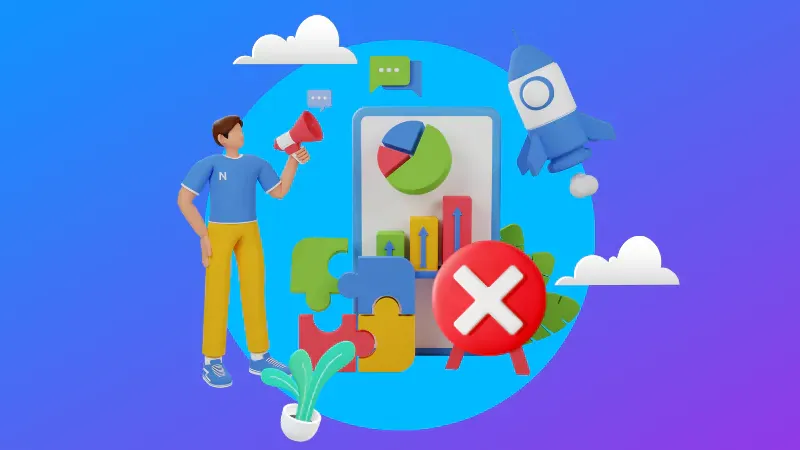Contact Us
Related Posts
Category

In your eCommerce store, product descriptions serve two purposes: they inform visitors about your product and then convince them to purchase. The majority of eCommerce companies are aware of the first goal and write product descriptions to reflect it. What’s missing, though, is the extra effort that can help tourists grasp the product so well that nothing stands in their way of becoming a customer. This article will teach you how to conduct research, prepare for writing, and write more convincing product descriptions that convert and increase sales.
Getting Ready to Write Product Descriptions That Convert
If the ingredients aren’t ready, the cooking time will be longer — and the flavor of your food will suffer as a result. Before you begin writing your product descriptions, make sure you’ve completed these critical steps.
- Make a list of your dream clients.
To begin, make a list of your ideal clients. Too often, I’ve found, company owners and advertisers have a tangential understanding of who they want to advertise. They haven’t recorded and fleshed out the customer’s concept. Documentation aids communication between company owners, consultants, and marketing teams.
- Compile a list of all product information.
It’s difficult to plan the right content before you know what you want to tell your consumers about your product. In Google Spreadsheets, create a checklist of everything from the product’s production date, features, and benefits to “How-tos.” You should check them off as you go while you’re writing product descriptions. This move ensures that you don’t overlook any vital product details on your website. It’s time to start writing product descriptions that sell now that you’ve gathered all of this vital knowledge.
How to Create Convertible Product Descriptions
I strongly advise you to write the product details first and then design the product overview page. Soon enough, you’ll see why. Instead, begin here.
1. Carry out a thorough analysis of your competitors.
When you do a competitor review, you don’t have to look at how their product details were written. Not as a rival to copy and execute, but as a buyer to find the holes in educating or persuading the buyer. With your “customer hat” on, make a note of any mistakes you notice and make a checklist of them. You should go over it after you’ve finished writing your own to make sure you’re not making the same mistakes as your rivals.
2. Locate the transactional keywords first.
With SEO quickly becoming one of the most effective eCommerce marketing platforms for increasing traffic and sales, you’ll want to make sure your product details are optimized for search engines as well. Often marketers make the mistake of writing product descriptions first and optimizing them later. But, believe me when I say that a well-thought-out and optimized definition produces faster results. Use Semrush for keyword analysis and Snippet Digital’s Keyword Insights tool to figure out what certain keywords are looking for.
You will use the correct keywords for your product description if you know the search purpose of the keywords. For example, the Keyword Insights tool shows that Product/Category pages rank seventh on the SERPs for the keyword [waterproof digital watch]. This indicates that the keyword is intended to be used for purchase.
3. Write a buyer-focused and keyword-focused product description (headings and paragraphs).
You’re able to compose your product description’s title and subtitles now that you’ve compiled a list of keywords. The Ustraa brand, for example, uses the keyword “beard growth oil,” which has a volume of 18,100 searches each month. After you’ve written your headings, you can use your transactional keywords in the product specifics and summary to help it rank and convert.
4. Feature vs. Benefit First and foremost, make a decision based on the products you’re selling.
Customers take different approaches to shop for various items. When a customer buys a tablet online, they will search for features such as screen size, camera, and so on. However, if a consumer is purchasing food oil (as in the example above), they may want to learn more about the product’s benefits first.
To solve conversion barriers, figure out how your customers purchase your goods online, prioritize their needs, and add the details they need to your product descriptions.
5. When writing product descriptions, keep the 4Cs in mind.
Ecommerce is a time-sensitive market, and all entrepreneurs want to get it up and running as soon as possible. However, the consistency of the product pages should not be harmed as a result of this. You won’t see the return if it’s poorly published. It’s a good idea to keep these 4Cs in mind when writing product descriptions:
- Clarity: The explanations should be simple enough that not only the potential customers but also their influencers will understand them.
- Concise: When describing the items, try to use fewer phrases (get creative here).
- Consumer desires, preferences, challenges, and demands should all be addressed. Assist them in feeling as if the product was designed specifically for them.
- Credible: Make sure the information you’re sharing is correct and stop using exaggeration.
6. Wherever possible, have creative taglines.
In mass marketplaces, where you can only afford to write keyword-centric material, writing innovative taglines in your product descriptions is not an option. Premium/luxury brands, as well as specialty brands, have a distinct set of customers that they can only reach via social media or email. Keywords don’t matter as much here as imagination.
7. Provide a section of the product description that explains how to use the product.
Think again if you think this section isn’t necessary for your product. May you elaborate on any of the following points in relation to your product?
- What to do with it and how to use it
- What to do if it gets dirty.
- What’s the best way to get it started or stop it?
- What is the procedure for making it?
- What should I do with cleaning it?
- How can you put it together?
Then you’ll need to include it in the product summary. The aim is for tourists to be able to get more information right on the website instead of having to go elsewhere. By including a how-to section in the product summary, you’re saving customers time and decreasing the chance that they’ll leave to look for details and never return.
8. Use a shorter background for your brand story.
Vendors selling on marketplaces and those with their own online shops should all include brand stories in their product descriptions. People who buy from their favorite brands or retailers have a high level of confidence in them, which is why they stick with them. Marketplaces, on the other hand, will assist niche companies and entrepreneurs in gaining early exposure and traction. Help consumers understand who you are and why they should do business with you in order to stand out in crowded markets. To your product description, provide your brand story, as well as a brief overview of your business and products.
9. Invoke sales by using social proof to establish trust.
Social evidence is crucial when it comes to improving conversion rates. And because we’re talking about writing conversion-oriented product descriptions, including social proof is important. Such examples are:
- Product reviews on your website, Google, and marketplaces are all good places to start.
- On social media, there are shout-outs.
- YouTube or social media video reviews are available.
You’re getting genuine feedback on how customers interpret your goods when you have social proof like this. This has a psychological effect on tourists who are considering making a purchase.
10. To persuade buyers, provide a FAQ section.
Since marketplaces have many vendors and can only answer questions posed by customers, they often have FAQs. Many other online vendors or retailers, on the other hand, disregard FAQs because they believe that their email address or customer service system would suffice.
From a customer’s perspective, you must comprehend this. To contact you and get responses takes a long time. If you have the most frequently asked questions and responses on the web, you can speed up the conversion process and save your support team time. Identify potential customer questions about your product, write responses, and organize the product FAQs in the format below.
- Capabilities and features
- Advantages
- Applicability
- Shipping, shipping, returns, and exchanges are all taken into consideration.
11. Finish with all of the basic information that is still being collected.
At this stage, you’ve covered almost all of the main product details that can help you increase conversions. Return to the product details and competitor review checklists. You may be able to provide details about packaging, manufacturer, shipping & distribution, delivery partners, return/exchange, warranty, guarantee, assembly facilities, virtual or at-home attempt, car wash, or other factors. Let the key points stand out in a unique way.
12. Make Use of Bullet Points to Make Reading Easier and Faster
You’re creating human-readable product descriptions. They’ll look at your items, read the details, and then decide whether or not to purchase them. The highlights of your product are its features and advantages, so they should be highlighted in bullet points. This allows customers to search the advantages and features more quickly, which leads to more conversions.
13. Combine text and graphics in your design (Turn the Necessary Text into Graphics)
It’s now time to discuss the product summary and design that you’ve written. Decide if you want your product summary to be shown as text or as graphics. I usually don’t suggest relying solely on graphics to rank in the quest because you’ll miss out on opportunities. However, brands that value innovation over keywords, as well as those with a high level of popularity and market awareness, may prefer graphics to text, or a combination of the two.
Make the Most of Product Descriptions to Increase Conversions and ROI.
Buyers are more likely to purchase the product if their expectations are exceeded. When you use the method outlined above to write more convincing, better-converting product descriptions, keep this in mind. Create a product overview for your potential customers by planning, writing, and designing it. Then customize them for the quest, and nothing will be able to stop you from attracting, convincing, and converting more tourists into customers.











